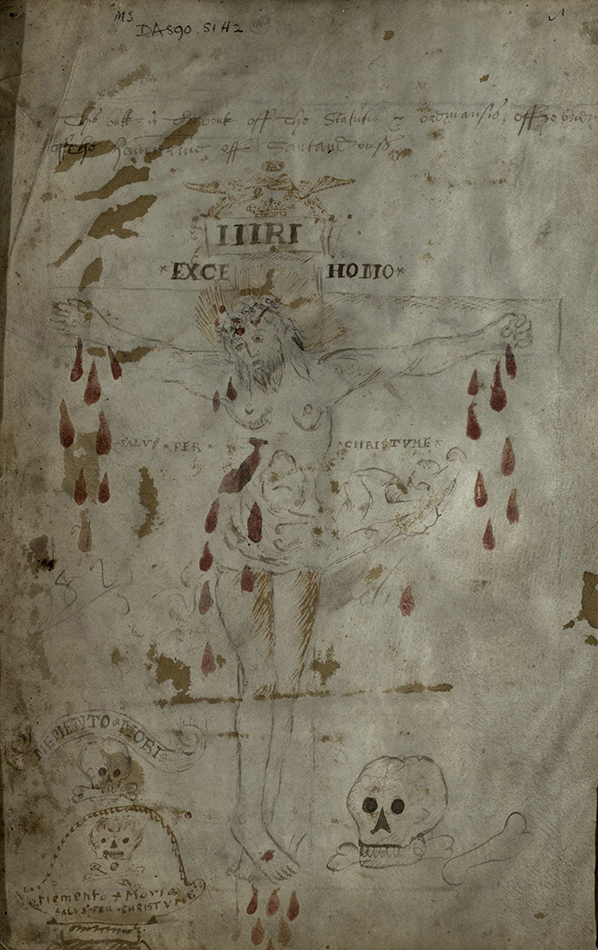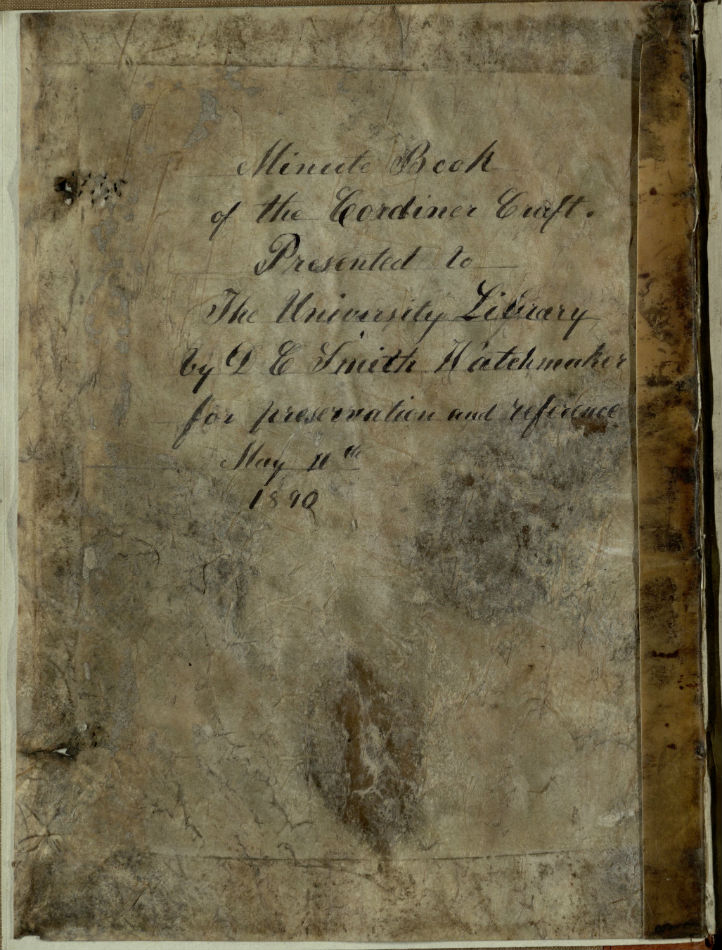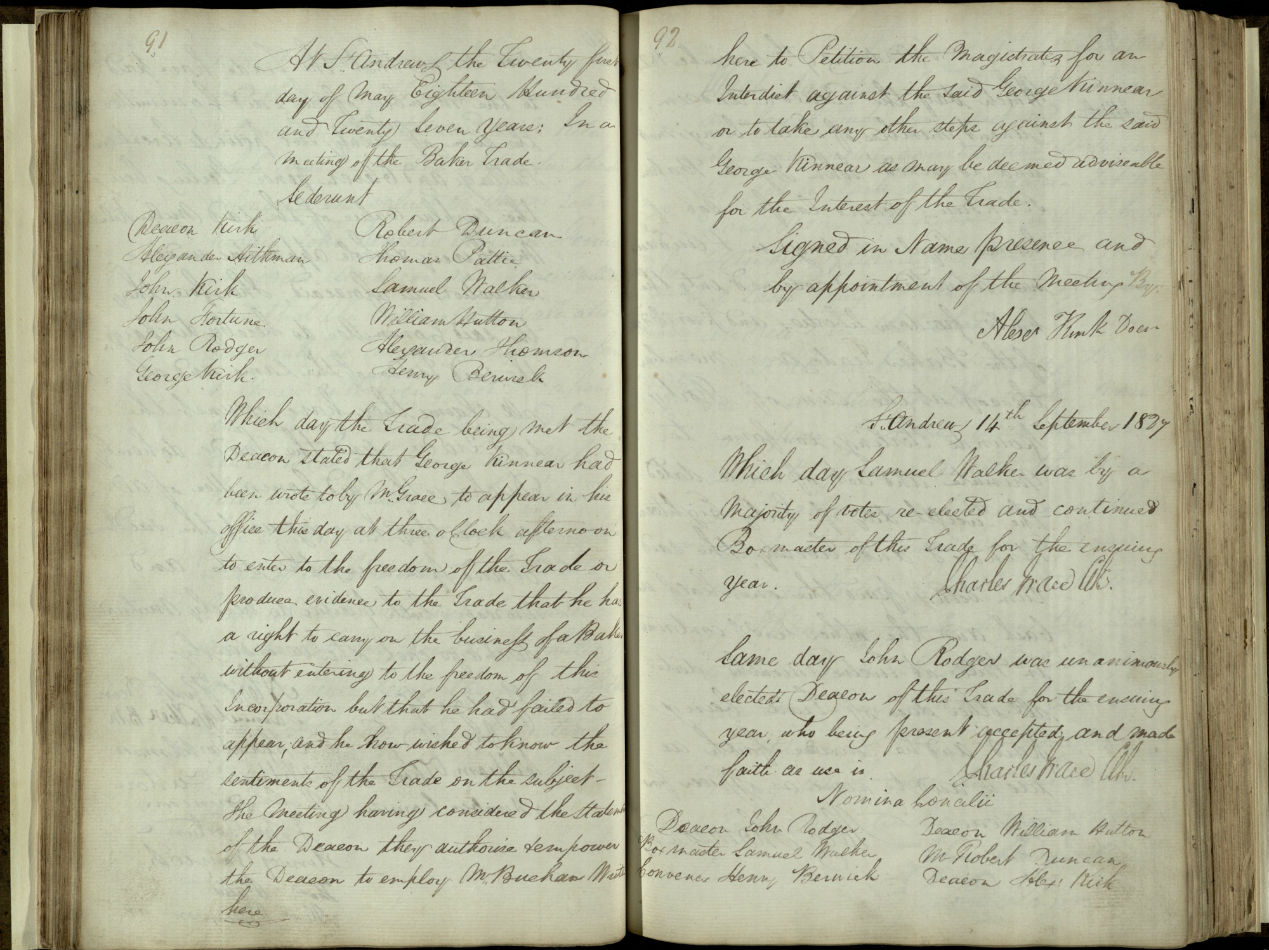Highlights from the Reading Room: Burgh of St Andrews Trade Guilds
My research on life in medieval and early modern St Andrews has given me the opportunity to work at the new Special Collections Reading Room in Martyrs’ Kirk. To the right when one enters the building is the beautiful Postgraduate Research Reading room, housed in the main part of the old church. The Special Collections Reading Room is to the left in a light, modern and spacious room. One of the old windows of the church can be seen just above the collection point. The large desks for readers are a wonderful feature, providing plenty of room to take notes on the treasures of the collection. The staff have been very helpful as I work my way through the rich records on the early town.
My visit has concentrated on the records of the medieval and early modern crafts of St Andrews, the Hammermen, the Cordiners, and the Baxters. My first day was enlivened by the fascinating cover page of the Hammermen’s book, which depicts the Crucifixion, complete with startlingly red drops of blood.


The records are a rich source of names for the craftsmen of St Andrews and their apprentices. They also illustrate how the crafts were regulated to ensure order, and how some members fell short of these ideals. In May 1609 William Hude was fined by the cordiners for disregarding religious services by playing ‘at the bowls and other games’ during preaching, while in December 1584 John Smith was found guilty of uttering ‘injurious words’ to the deacon of the hammermen in Robert Geddy’s dwelling house. Smith not only had to pay a heavy penalty, but he had to take the deacon by the hand and ask his forgiveness along with that of the rest of the council of the craft. Sometimes disputes became physical as in April 1592 when a member of the baxter craft pulled the hair out of another man’s beard. When the baxters dealt with such offences, they often ensured payment of the fine by forbidding the guilty man from practising his trade until he had paid.

On a more peaceful note, we see arrangements for apprenticeships, including one in May 1587 which sheds a little light on the role of women in the craft. John Aytoun became apprentice to William Balfour baxter, but if William died before his apprenticeship was over, he would become the apprentice of Beatrix Broun, William’s widow, until their son Andrew Balfour was able to take him on. As I work my way through these records, I look forward to many more such glimpses of life in the town.
Elizabeth Ewan – University of Guelph, Guelph, Ontario, Canada